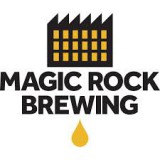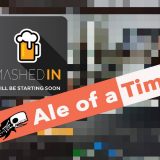One of the criticisms I hear often about craft beer is the relatively high alcohol content vs mainstream beer. Given the recent history of beer, where lagers at less than 5% alcohol by volume have dominated the landscape, it’s easy to see why craft beer with its avalanche of brashness and wider range of styles would send some hearts a-flutter.
However the idea that as a category it’s all high in ABV has always bugged me. So I decided to investigate.
Before we go into this – I went to school in small town New Zealand where education wasn’t exactly king. As a result, I dropped out of all maths classes at 15 and chances are I’ve made some fundamental statistics/data-gathering errors here. If you disagree with my approach at least wait until the conclusion before jumping up and down. Then feel free to jump up and down all you want.
Method
Given there is no easy way (that I know of) to get the alcohol percentage of all craft beer on the Australian market, which would be the ideal starting point, I decided to get a cross section. The initial idea was to find somewhere that has a complete representation of the current landscape.
“Would that be a Dan Murphy’s?” I asked myself. The answer was “probably, yeah”. Given they stock a range that reaches from Feral to Moo Brew to Sierra Nevada and heaps in between, it would probably be a great ‘what everyday Australians see’ selection.
But I’m trying to prove a point here so instead I decided to go for the throat and take my sample from one of the geekiest of them all.
Slowbeer, in Melbourne, opened in 2009 and was “Australia’s first 100% dedicated craft beer store” (from their About page). Slowbeer don’t stock a large amount of introductory pale ales – which is what I’d mostly find doing this with Dan Murphy’s; and if I’m honest, I also chose them because their range isn’t massive compared to other equivalent shops so it made my job easier. They also have an up to date stock list online meaning I didn’t need to leave my desk.
For time saving purposes I chose to do only Australian beer and what was in stock at time of writing. Using a spreadsheet to list each brewery, beer and ABV, I was able to get the median, average and some other useful data about how much alcohol is in craft beer.
So, is it too much?
Conclusion
As I started doing this I watched the average fluctuate. At first pretty wildly, and then slowly becoming consistent (I bet there is a word for this that I would’ve learned had I stayed in class). As it got lower I was happier, and as I came up against a run of 10% beers I was faced with the prospect that this myth would be true.
I continued punching in the numbers and as I did, something dawned on me… I don’t actually have an idea what a reasonable number would be. What is too high?
Then I realised that the whole criticism of craft beer ABV wasn’t incorrect but rather it’s complete fallacy. You see, even if the number came out too high by whatever arbitrary benchmark you or I may set, what I was looking at was a list of 150 different Australian beers on the shelf that, for the most part, are independently owned and range from 3.5% to 11%.
It became apparent the takeaway from this exercise wasn’t going to be what’s too high, but rather both high and low are both represented multiple times.
Yes, there are a lot of beers on the market that are high in alcohol. That is completely true. There never used to be. That is also true. There are also many that are quite low in alcohol. Also more than there used to be.
So the whole idea that craft beer is too high in alcohol doesn’t actually make sense. Too high for what? For what you are doing right now? Then don’t drink one. For drinking all night? Then slow down your drinking. For an all day session? Maybe question your decision making. It’s not the beer but rather the general approach to the product. Rarely does the same criticism get levelled at wine, and if it does it’s usually a taste issue rather than a booze issue.
What people are really telling us when making these statements is that they don’t know a lot about craft beer and it’s possible they may have a case of choice overload. As an industry the challenge is to keep educating against such useless statements. To show that everyone who is interested in drinking a craft beer can find something suitable for them. And if they aren’t, then whatever they like to drink is still easily found regardless of what small brewers are doing.
If you’ve read this far I’m sure you want the numbers. What is the average and median ABV of Australian craft beer on the shelves at Slowbeer? Well it’s a little higher than I thought. Not aggressively so:
| Average | 6.04 |
| Median | 5.7 |
| Number of beers more than 6% | 49 |
| Number of beers equal or less than 6% | 95 |
| Number of beers equal or less than 5% | 48 |
| Number of beers equal or less than 4% | 5 |
So there you have it. If you are at one of the geekiest beer places in Australia and you want something less than 5%, which is where mainstream beers generally fall into, you have 48 Australian options. That’s not including the large number of international beer stocked.
I now wonder how it would look if I did the same exercise with Dan Murphy’s catalogue, but I suspect the conclusion would be the same. And that conclusion is choice. Both as a noun, and kiwi slang.
Sweet as.




What in god’s name are you talking about?
There are thousands upon thousands of beers varying in ABV, people have more than enough options to choose one that fits their desired mood. There is no standard or norm for a craft beer’s ABV, its relative to style and 99% of the beers in that style fit in that beers typical ABV range or it wouldn’t be labeled as such (ie: session 4-5%, IPA 5-8%, DIPA 8-11%, ) You are really ‘reaching’ for something to write about, you should drink more beer and write from your heart instead of reflecting on other people’s (often crazy) insight.
“There are thousands upon thousands of beers varying in ABV, people have more than enough options to choose one that fits their desired mood. ”
Did you read the post? That was literally the conclusion?
Curiosity got the better of me and I had to check Dan Murphy’s to see how different the spread was, so I grabbed all of the ABV for beers that were available for nationwide delivery as of now. Didn’t bother filtering for Australia only, but I did exclude beers below 1%.
The median was 4.8% and the average was 4.9. Pretty similar but a bit lower than Slowbeer. Just over half the beers (225/443) are between 4 and 5 percent ABV too. Can share the spreadsheet if you’re interested.
Cheers.
Get in touch if you want the raw data to have a play.